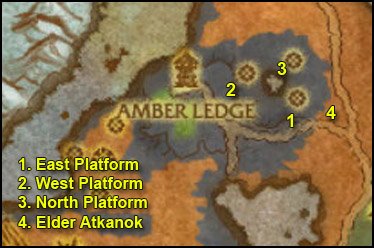Free Gyrocopter Plans Sulfuron
Other features of the N8489B gyrocopter. Most Bensen B8M gyrocopters follow the Bensen plan for main. The original Bensen B8M plans call for a plywood or aluminum vertical tail structure. Gyrocopter Certified Flight Instructors (CFI) are needed. The growth in gyrocopter sales requires more CFI's. Gyrocopter CFI's earn a higher rate than However, it is relatively quick for a fixed wing CFI to add on a gyrocopter CFI rating. Call Josh at Airgyro for more information: 801-794-3434.

In case you didn't already know, 'gyrocopter', 'gyroplane', 'autogiro' and 'autogyro' all mean the same thing, and the most important feature shared by gliders, airplanes, helicopters and gyroplanes is that they all use wings to fly. It's just that on helicopters and autogyros the wings are mounted on pylons and spin in circles, but they are rigidly affixed to the sides of airplanes and gliders. Other than that, they all get into the sky the same way: You move a wing rapidly through the air and it produces Lift. The rotating wings of a helicopter are directly-driven by the engine, enabling it to hover; whereas the rotating wings of the gyroplane are free-spinning, meaning it can't hover – though it can come astonishingly close to it, because it needs very little forward speed to stay airborne.
The cardinal virtue of the gyroplane is its ability to do nearly everything a helicopter can do, at only a fraction of the cost, while doing it more safely than any other kind of flying machine. While even the most mundane gyroplanes are true STOL (Short Take-Off/Landing) vehicles, they can be configured to take-off and land with no ground-roll at all. Moreover, their exceptional STOL capabilities make them terrific for 'bush' or water operations. Helicopters are vastly more mechanically complex than any other kind of aircraft, with a host of critically interdependent moving parts, which is why they cost several times as much to purchase and maintain as a same-sized gyroplane. Meanwhile, many gyroplanes can be purchased and operated for less than some motorcycles, and because they fly in a constant state of autorotation, even a total engine failure results in a parachute-like descent, making them the safest of all aircraft. As if all that weren't wonderful enough, a typical gyroplane can stay aloft at 5 to 10 knots airspeed, and even a small gyroplane (in the hands of a competent, experienced pilot) can be operated safely under high wind conditions that would keep gliders, ultra-lights, blimps, balloons, space launches and most private airplanes on the ground. Moreover, gyroplanes are capable of the same forward speeds as helicopters.
This is so because of the rotating wings, and their 'wing-loading', a term describing how many pounds of an aircrafts total weight are supported by each square foot of its wings; Gyroplanes have very high wing-loading because their rotorblades have so little total area, using rotational speed rather than size to generate lift. So gyroplanes really do offer exceptional utility. Gyroplanes are simple and inexpensive to own, fly, maintain, transport and store. They're easy to tow. They can use skis for snow operations.

They can be fitted with amphibious floats for water-and-landing flying, and although it is not presently being done, they could be equipped with sophisticated avionics, autopilots and de-icing gear for all weather capability. Autocom cdp pro compact diagnostic. They're highly versatile and very practical.
Because of technological advances being incorporated into 3rd – and 4th generation equipment like the Sport Copter series, they've become so versatile and practical that you're going to be seeing a lot more of them; many of them performing important commercial tasks perhaps even military tasks that have heretofore been the sole domain of airplanes and helicopters. Even to the aviation community itself, the gyroplane has been something of an open secret, despite the fact that it first appeared in 1923, and for a time it enjoyed a great deal of popularity. But then the first successful helicopters emerged in the war years of the late 1930's. Helicopters could hover and the gyroplane couldn't, and airplanes could go much faster than either of them, so for decades a defense-minded aviation industry left gyroplane development – while still in its infancy – in a state of virtual suspended animation. And that's more or less the way things stood until the late 1980's, when the elements of a genuine renaissance in gyroplane development, popularity and sales finally became clearly evident. Sport Copter, Inc. Is only one small part of the admittedly brief yet engagingly interesting story of Gyroplanes, but part of the satisfaction we derive from our work is the constant, exciting awareness that we're still the best part of that story, because we know we design and built the finest gyroplanes in the world.